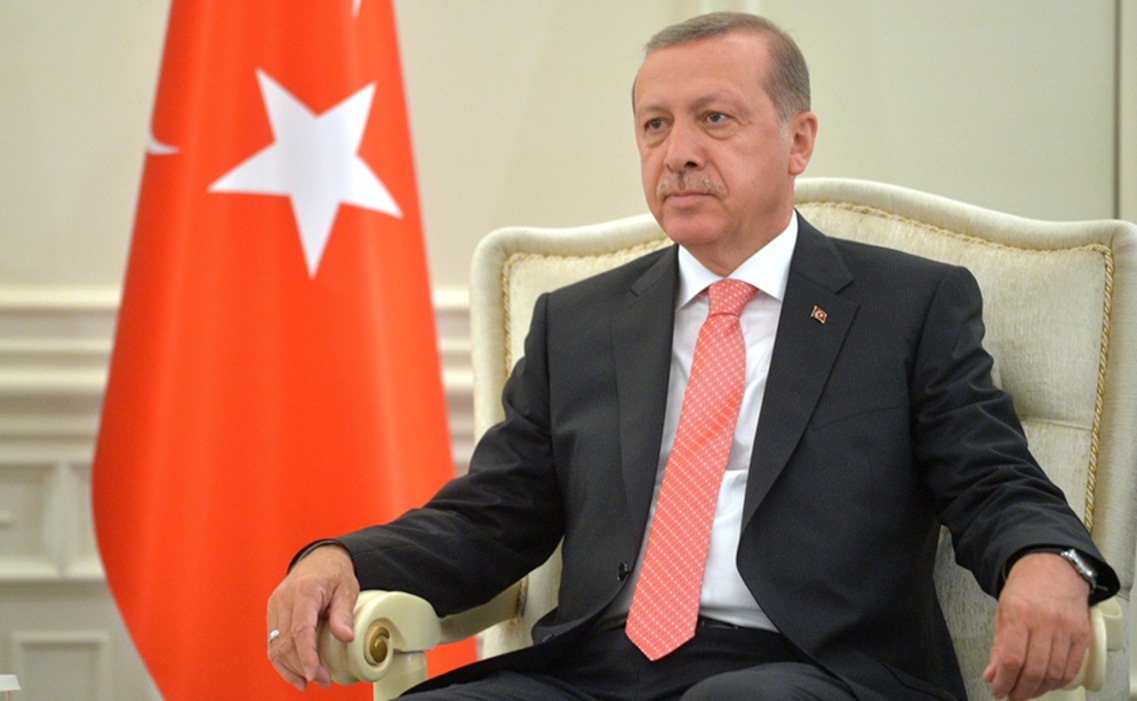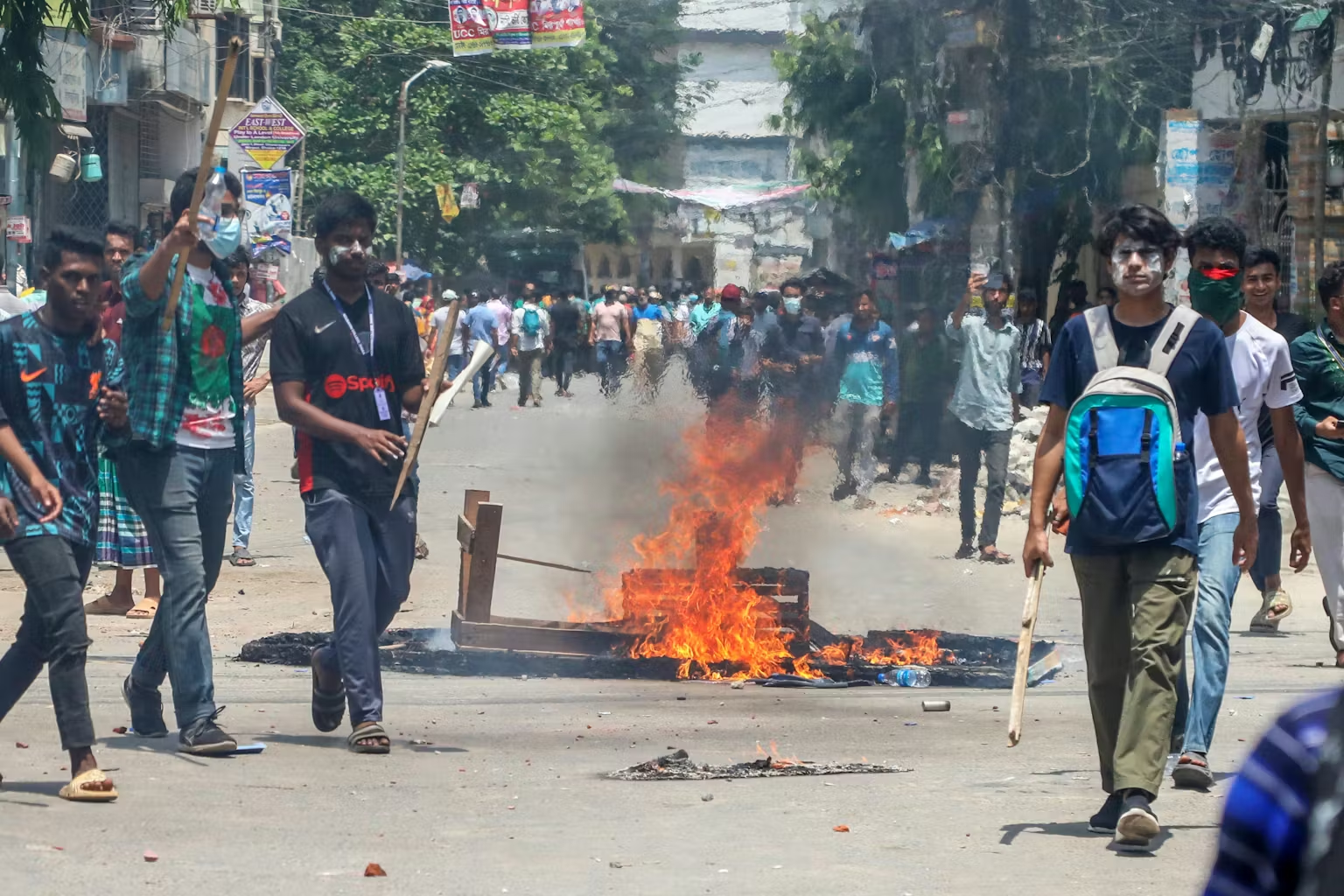The overall politico-military objective of Operation Sindoor was to punish Pakistan for fighting a proxy war. Pak-sponsored terrorism is a well-planned long-term strategy, and the shades of cross border terrorism still exist.
Cross-border terrorism emanating from Pakistan has remained a central security challenge for India. This report examines the evolution and characteristics of these threats – notably militant infiltrations, bombings, and hijackings – and assesses India’s multi-pronged response. We identify a strategic gap: despite extensive documentation of attacks and hardware, there is limited analysis of India’s integrated doctrinal response under the nuclear shadow. The study’s objectives are to trace the origins of cross-border militancy, evaluate India’s military and law-enforcement measures, and review diplomatic efforts to isolate terror sponsors. Key questions include: What drives Pakistan-based terrorism, and how has India countered it? And how effective have India’s land-border security, surgical strikes, and international initiatives (e.g. FATF campaigns) been? Methodologically, we survey official reports, think-tank studies, and media accounts. The analysis finds that India has combined calibrated military action, hardened border defences, and diplomatic pressure (such as pushing Pakistan back onto the FATF “grey list”). However, persistent challenges – rugged terrain, local insurgent recruitment, and the Indo-Pakistani nuclear context – complicate any easy solution.
Background
Since the partition, India–Pakistan rivalry has been marked by repeated armed clashes and terrorism. Pakistan-backed militants have long used the unresolved Kashmir dispute as justification for cross-border aggression. Indeed, major terror incidents – from the 1993 Mumbai blasts to the 2008 Mumbai attacks and the 2016 Pathankot airbase strike – underscore that “the most direct and persistent challenge” to India comes from Pakistan-based terrorist groups. Over the decades, organisations like Lashkar-e-Taiba, Jaish-e-Mohammad, and Hizbul Mujahideen have found sanctuaries in Pakistan. India’s leadership has noted that despite high-profile strikes, efforts to deter and respond have often fallen short. For example, the repeated success of attacks (Parliament 2001, Mumbai 2008, Pulwama 2019, etc.) has led New Delhi to consider stronger reprisals, yet any military operation is restrained by Pakistan’s nuclear arsenal. In sum, cross-border terrorism in South Asia persists in an ambiguous, high-stakes environment – one where “no theories in the existing literature… offer guidance” on how nuclear-armed neighbours can address militants with partially deniable links to state agencies.
The root causes of this threat are manifold. The Kashmir insurgency, now in its fourth decade, provides ideological and logistical cover for infiltrators. Pakistani strategy has included funding extremist ideology and recruiting mujahideen while denying formal sponsorship. As one analysis notes, “so long as the Pakistani state and groups such as Lashkar-e-Taiba do not demonstrate a sustained commitment to renunciation of violence…, more violence with escalatory potential is likely.”. Terrain has also aided militants: the Line of Control (LoC) in J&K is mountainous and porous. In 2014, analysts reported that Pakistan was training roughly 1,000 militants “waiting to infiltrate across the LoC”. Many dozens of these intruders have been killed by Indian forces in recent years – e.g. nearly 17 militants were killed in a single month’s infiltration attempts in Kashmir. Off the LoC, the flat frontier in Punjab and Rajasthan has seen tunnels and smuggling routes. Indian authorities have discovered multiple cross-border tunnels along the Punjab border – “proofs of Pakistan’s nefarious designs” to circumvent fences. In such ways, Pakistan’s proxy war has sought to bleed India through terror, even as Islamabad denies complicity.
The human and political costs are high. Large-scale attacks have slain hundreds of civilians and soldiers, and stoked public outrage. The Indian government responds that militants exploit local grievances and poor border management to penetrate security cordons. Countering this threat also absorbs enormous resources: patrolling the 3,300+ km Indo-Pak border is a constant task for the Border Security Force (BSF) and Army, involving fences, floodlights, and sensors. For example, in the desert of Rajasthan, the BSF apprehended 50 infiltrators in 2022 (including 10 Pakistanis) and recovered large caches of narcotics and weapons. These measures, combined with raids on militant camps inside Kashmir, aim to prevent terrorists from reaching their targets.
Literature Review
The study of cross-border terrorism in the India–Pakistan context has been extensively explored through government reports, strategic think tank publications, and academic journals. However, much of this existing literature tends to focus on isolated incidents or tactical outcomes, rather than presenting a cohesive view of India’s evolving strategic doctrine.
Numerous analysts, including those from the Carnegie Endowment for International Peace (2023), have argued that India’s approach has gradually shifted from pure deterrence to calibrated punitive action. Following landmark attacks such as the 2001 Indian Parliament attack and the 2008 Mumbai attacks, the debate over proportional response and escalation under the nuclear shadow became central to Indian security discourse.
Public documents such as Lok Sabha responses by the Ministry of Home Affairs (2023) provide insight into the operational side of India’s counter-infiltration efforts, highlighting physical border security measures, including fencing, floodlighting, and sensor deployment. These are complemented by media reports and ground-level updates (e.g., The Tribune, Times of India, and State Times), which regularly document drone sightings, tunnel discoveries, and arrests of infiltrators along the Punjab and Rajasthan sectors.
From a legal and diplomatic standpoint, India’s efforts to isolate Pakistan internationally—especially through FATF greylisting—have received scholarly attention. Studies such as South Asia Monitor (2025) detail how terrorism-related incidents like the Pahalgam attack were used to pressure Pakistan’s accountability on terror financing. The FATF’s documents further support these claims by monitoring Pakistan’s compliance and ongoing risks.
Moreover, think tanks such as ORF and IDSA have provided in-depth evaluations of India’s internal counter-terror mechanisms, from intelligence sharing to joint police-army operations. Analysts like Pandit and Mukherjee (2023) emphasise that while India has achieved tactical successes—e.g., surgical strikes (2016) and the Balakot airstrike (2019)—the broader strategic effect remains constrained by nuclear deterrence and regional instability.
There is, however, a clear research gap in the integration of India’s military, intelligence, and diplomatic arms into a unified doctrine for counter-terrorism. While many sources discuss these elements separately, few analyse how they function together in a sustained strategic manner. Furthermore, limited attention is given to the interplay between internal unrest in Kashmir and the effectiveness of border-focused countermeasures.
This paper attempts to bridge that gap by synthesising both hard data and strategic assessments to offer a more coherent understanding of India’s multi-dimensional response to cross-border terrorism, while recognising the enduring limitations posed by geography, ideology, and the nuclear balance.
Research Gap
Existing analyses of India’s counter-terrorism efforts against Pakistan-originated threats often document incidents in isolation, failing to offer a cohesive strategic understanding. These studies rarely integrate India’s multi-faceted tools (military, diplomatic, policing) or address the critical impact of nuclear deterrence on counter-terrorism strategies. There’s also a noticeable gap in examining the evolution of India’s doctrine and rules of engagement in response to recurring cross-border attacks.
Research Objectives
- To chart the historical evolution of cross-border terrorism from Pakistan to India, including major incidents and militant tactics.
- To analyse India’s strategic and military responses (e.g. surgical strikes, border fencing, counter-insurgency operations) to these threats.
- To examine the effectiveness of India’s internal security measures (law enforcement, intelligence networks) in countering infiltrators and networks.
- To identify persistent challenges (geographical, political, nuclear-related) that impede the mitigation of cross-border terrorism.
Research Questions
- What are the underlying drivers and tactics of cross-border terrorism from Pakistan, and how have they evolved?
- What border-security and surveillance measures has India deployed, and how effective are they in preventing infiltration and smuggling?
Methodology
This study uses a qualitative, literature-based approach. We reviewed primary sources (official government statements, press releases of Indian security forces) and secondary literature (strategic analyses from think tanks, academic journals, and reputable media). Data on specific events (terror attacks, infiltration incidents, counter-operations) were drawn from news archives and public reports. Think-tank commentaries (e.g. IDSA, ORF) and academic publications were used to interpret India’s evolving doctrine and policy debates. By synthesising these insights, the analysis presents an integrated picture of India’s strategic response to Pakistan-origin cross-border terrorism.
Analysis
Cross-border terrorism here refers to violent acts planned or supported from across Pakistan’s border that target the Indian territory. Traditionally, this has meant infiltration of guerrilla fighters or arms into Jammu & Kashmir and border states, as well as high-profile attacks inside India (suicide bombings, shootings, hostage sieges). These operations exploit Pakistan’s rear areas and militant sanctuaries, enabling non-state actors to strike with plausible deniability.
Historical trends: Militancy surged in the 1990s with the Kashmir insurgency, peaking in cross-border incursions in that decade. Thereafter, episodes like the 2001 Parliament attack (Jaish-e-Mohammad) and 2008 Mumbai siege (Lashkar-e-Taiba) demonstrated the reach of Pakistani proxies. In 2016–2019, India began a policy of calibrated reprisal: for example, in September 2016, the Army’s “surgical strikes” hit terrorist launch pads across the LoC after the Uri attack, and in February 2019, the Indian Air Force struck a JeM camp in Balakot. These preemptive actions showed India’s willingness to act beyond its borders in response to terrorist provocations, balancing domestic pressure to punish with the need to manage escalation (given the nuclear backdrop). Meanwhile, militant activity in Kashmir has fluctuated, notably, including terrorist activity. Groups have resurged since August 2019, when India revoked J&K’s autonomy, indicating how political changes can affect the intensity of cross-border attacks.
Border security measures: India has invested heavily in hardening its western frontier. A reinforced fence now spans much of the Indo-Pak border, augmented by floodlights, observation posts, and sensors. The BSF routinely patrols the desert and plains, watching for infiltrators. During 2022–2023, for example, BSF patrols in Rajasthan apprehended dozens of intruders – including Pakistani nationals – and recovered significant narcotics, opiates and arms caches. Such seizures highlight the dual nature of the threat: smugglers often carry contraband and small arms meant for terror supply chains. Analysts in India have also documented numerous cross-border tunnels (e.g. in the Samba and Akhnoor sectors) used to bypass fences. In response, India has widened anti-infiltration barriers in identified hotspots and launched tunnel detection initiatives. Inter-agency coordination has improved; for instance, rapid-reaction teams (including local police and intelligence units) now intervene immediately when Border forces detect infiltration. Local populations are also educated to report suspicious movement. These steps have reduced but not eliminated infiltrations – the terrain and presence of determined cadres mean vigilance must be continuous.
Military and counterinsurgency responses: India’s doctrine traditionally emphasised deterrence and diplomatic redress, tempered by “no first use” of nuclear weapons. After 2001 and 2008, however, Indian strategy has gradually incorporated limited punitive action. Surgical strikes in 2016 and air strikes in 2019 signalled a shift: India can and will conduct cross-border commando or aerial raids against terrorist bases. Such actions aim to impose costs and deter future attacks, though they carry risks of tit-for-tat escalation. Domestically, India has augmented security in vulnerable areas (e.g. strengthening quick-reaction forces, improving force postures in Kashmir). Counter-terrorism units of the Army and police conduct regular sweeps to neutralise militant cells. Intelligence agencies (IB, RAW) strive to preempt plots and interdict networks, both within the Kashmir Valley and on the border. Despite these efforts, Pakistan’s proxy networks remain resilient: new terrorist groups often emerge to replace those dismantled, as highlighted by Carnegie analysts, noting that Pakistan’s deep state has not committed to uprooting organisations like LeT.
Diplomatic and Legal pressure: Recognising the limits of military tools, India has pursued international accountability measures. In forums like the Financial Action Task Force (FATF), India actively campaigned to keep Pakistan on the grey list for terror financing. In May 2025, following an attack in Pahalgam that killed 26 tourists (blamed on Lashkar-e-Taiba), India intensified its push for Pakistan’s re-greylisting. Delhi argues that Islamabad has repeatedly failed to curb militant groups from its soil. India also raises terrorism issues at the UN and G20, and cites evidence of ISI and Army involvement in cross-border operations, aiming to build global pressure on Pakistan. These diplomatic efforts complement military measures by targeting the financial and political support networks that sustain terrorism. Nonetheless, Pakistan often counters with its propaganda and has recently denied involvement in attacks like Pahalgam, making objective resolution difficult.
Challenges and outlook: Several enduring factors complicate India’s task. First, the nuclear dimension severely constrains large-scale retaliation. India must calibrate its response below the conventional threshold that might provoke strategic escalation. Second, the geographical terrain of the Himalayas and deserts defies total control; even a fortified border can be breached by skilled infiltrators or novel tactics. Third, internal grievances in Kashmir, driven by local disaffection, can facilitate recruitment for Pakistan-backed militancy. For instance, the surge in militant operations after 2019 suggests that purely security measures cannot eliminate the insurgency without a political resolution. Finally, while India has improved coordination among its security agencies and is developing counter-terror doctrines, experts note that unified doctrines for hybrid threats are still evolving. As one commentary warned, “India needs to follow a three-pronged strategy” (swift military response, international exposure of Pakistan’s designs, and rebuilding war-torn regions) to effectively counteract these provocations. In practice, India’s current posture blends continued deterrence (e.g. public affirmations of resolve) with targeted action, but analysts caution that sustainable peace requires Pakistan’s demonstrable commitment to end cross-border militancy.
Conclusion
Cross-border terrorism from Pakistan remains a chronic threat to India’s security. This analysis has shown that India’s response has been multidimensional: it has involved hardened borders, surgical military action, internal counter-terror efforts, and persistent international diplomacy. India’s strategy reflects a delicate balance between robust defence and cautious restraint (given nuclear risks). Notable measures, such as punitive strikes on terror camps and intensive fence/sensor networks, have had tactical success in deterring some infiltrations. Diplomatic pressure (e.g. FATF greylisting campaigns) is also increasingly used to constrain terror financing. Nonetheless, deep-rooted drivers of militancy (Kashmir conflict, extremist ideologies, Pakistani proxy support) continue to fuel new attacks, as seen in the recent Pahalgam tragedy. The nuclear backdrop and unresolved political issues further complicate the situation. In conclusion, while India’s evolving strategy demonstrates coherence and adaptability, fully neutralising traditional cross-border terrorism will require sustained political will, improved intelligence, and joint doctrines, as well as broader measures to undercut the insurgency’s appeal. Only by integrating military readiness, tight border management, and international diplomacy – and by addressing the Kashmir dispute itself – can India mitigate the enduring threat of Pakistan-originated terrorism.
Disclaimer: The views and opinions expressed by the author do not necessarily reflect the views of the Government of India and Defence Research and Studies
Title image courtesy: https://www.newscientist.com/

References
- Carnegie Endowment for International Peace. (2023, July). India–Pakistan under the nuclear shadow. https://carnegieendowment.org
- Financial Action Task Force (FATF). (2024). Jurisdictions under increased monitoring – Pakistan review. https://www.fatf-gafi.org
- Indian Ministry of Home Affairs. (2023, March 28). Lok Sabha Unstarred Question No. 4460: Infiltration incidents and countermeasures.
- Pandit, R., & Mukherjee, A. (2023). India’s strategic posture on cross-border terrorism. Carnegie Endowment for International Peace.
- State Times. (2024, December). BSF’s Western Command seized 250 drones, arrested 15 Pakistan nationals. https://www.statetimes.in
- The Tribune (Chandigarh). (2021, December). BSF shoots down a drone along the Punjab border. https://www.tribuneindia.com
- The Times of India. (2024, September). India set to ink $4 billion Predator drone deal. https://www.timesofindia.indiatimes.com
- South Asia Monitor. (2025, June). Pahalgam attack renews FATF pressure on Pakistan. https://www.southasiamonitor.org
- Manhas, N. S. (2023, June). Militant regrouping in Kashmir post-Article 370: An early warning. Jamestown Terrorism Monitor, 21(10).
- Defence Integrity Initiative (EU). (2019). Border management and counterterrorism: Chapter 6. https://defenceintegrity.eu
- GKToday. (n.d.). NAM Movement and Non-Alignment 2.0. https://www.gktoday.in






